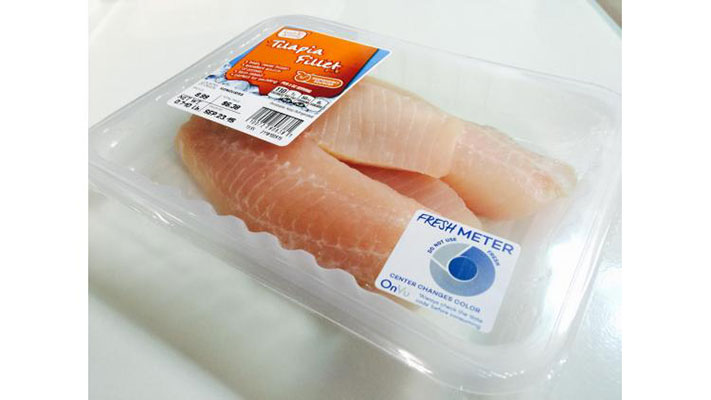According to data from an American company called packaging technology and research, 30% of food in the US and in many urban areas of developing countries is wasted in the hands of consumers. Can smart packaging adoption help solve this food waste problem? This research firm is convinced it can.
Their investigations are focused on what they call “Responsive Packaging” which is designed to counter food deterioration. This can be caused by oxidation, moisture and microbial growth. Responsive packaging uses chemical reactions to either reduce the food’s degradation or indicate what kind of conditions (such as temperature, time and contaminants) the food has been exposed to. The research firm helps companies study the implementation of such solutions.
Across the Atlantic in the UK, a company has already brought such an application to market.
Smart packaging film label shows how long it’s been opened
We all have moments when standing in front of our open refrigerator we wonder “how long has that been open?”
A company called Insignia Technologies, based in the UK has developed an active and intelligent film label that features a time and temperature indicator called « Pull and Time ». When the customer removes the tab, active ingredients come into contact with each other and create colours that change over specific time periods, under refrigerated conditions.
Changes can be set to give visual cues over a few days or up to six weeks. The labels can be produced on a narrow web flex printing press. The company aslo claims the production process is scalable.
Smart packaging still in its infancy
Smart packaging is still in its infancy. Chemical applications are complicated enough to market and we are still a way off from seeing food product connectivity to the internet, although it has been often evoked, such as with the famous “internet connected refrigerator”.
Smart and connected packaging hurdles
According to a recent article in industry week, there are two main factors that are keeping the Internet of Things from becoming mainstream with consumer-facing products. Firstly, there is still no universally accepted standard yet in IofT. Secondly, this hyper-connected industry has seen security breaches. Currently, the industry is vulnerable by nature. This article also cites statistics showing many IofT companies have trouble recruiting. The good news, however, is that industrial IofT is more advanced in comparison.
Smart packaging for safer foods will be beneficial for consumers and the industry alike. We’ll be following this trend closely in the future. Stay tuned!








